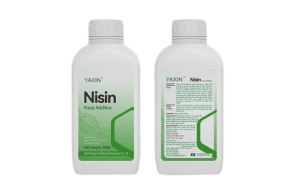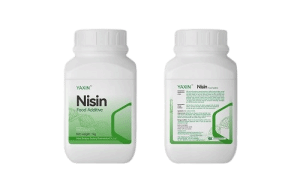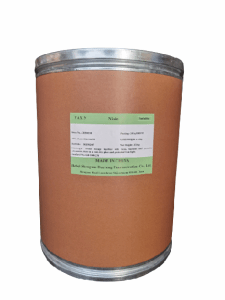Tel:+8618231198596

News
 CONTACT
CONTACT
 CONTACT
CONTACT
- Linkman:Linda Yao
- Tel: +8618231198596
- Email:linda.yao@dcpharma.cn
- Linkman:CHARLES.WANG
- Department:Overseas
- Tel: 0086 0311-85537378 0086 0311-85539701
News
Continuous surveillance systems track the therapeutic outcomes of Florfenicol Powder treatments.
TIME:2024-10-09
The Importance of Continuous Surveillance
Efficacy Monitoring: Continuous surveillance allows for the real-time tracking of treatment efficacy, enabling veterinarians and researchers to assess whether the prescribed doses and regimens are achieving the desired clinical outcomes.
Resistance Detection: By monitoring the response to florfenicol, surveillance systems can detect early signs of antibiotic resistance, allowing for timely adjustments in treatment protocols and the implementation of resistance management strategies.
Safety and Adverse Effects: Surveillance also helps in identifying any adverse effects or side effects associated with florfenicol use, ensuring that the drug is administered safely and that any issues are promptly addressed.
Public Health Impact: Data from surveillance systems can contribute to broader public health initiatives by providing insights into the prevalence and patterns of bacterial infections, as well as the effectiveness of current treatment practices.
Components of Continuous Surveillance Systems
Data Collection
Clinical Records: Veterinary records, including patient history, diagnosis, treatment details, and follow-up visits, are essential for tracking the progress of individual cases.
Laboratory Data: Microbiological testing results, such as bacterial culture and sensitivity tests, provide critical information on the causative agents and their susceptibility to florfenicol.
Pharmacokinetic Data: Information on the absorption, distribution, metabolism, and excretion of florfenicol in the treated animals can help in understanding the drug's behavior in different species and under various conditions.
Outcome Metrics: Specific outcome measures, such as resolution of symptoms, reduction in bacterial load, and overall health improvement, are recorded to evaluate the success of the treatment.
Data Analysis
Statistical Methods: Advanced statistical techniques, including regression analysis, survival analysis, and machine learning algorithms, are used to analyze the collected data and identify trends, patterns, and correlations.
Comparative Studies: Comparing the outcomes of florfenicol treatments with other antibiotics or alternative therapies can provide a benchmark for evaluating the drug's performance.
Geospatial Analysis: Mapping the distribution of infections and treatment outcomes can help in identifying geographic hotspots and regional variations in the effectiveness of florfenicol.
Reporting and Feedback
Real-Time Alerts: Automated alerts can be generated when specific thresholds are met, such as an increase in resistance rates or a high incidence of adverse events, allowing for immediate action.
Dashboards and Reports: Interactive dashboards and comprehensive reports provide stakeholders, including veterinarians, researchers, and public health officials, with up-to-date and actionable information.
Feedback Loops: Regular feedback to clinicians and farmers can help in refining treatment protocols and improving compliance with best practices.
Implementation and Challenges
Integration with Existing Systems
Electronic Health Records (EHRs): Integrating continuous surveillance with EHRs ensures seamless data collection and reduces the burden on healthcare providers.
Interoperability: Ensuring that surveillance systems can communicate with other databases and platforms, such as national antimicrobial resistance (AMR) monitoring systems, enhances the comprehensiveness and utility of the data.
Stakeholder Engagement
Collaboration: Collaboration among veterinarians, researchers, pharmaceutical companies, and regulatory bodies is essential for the successful implementation and sustainability of surveillance systems.
Training and Education: Providing training and educational resources to stakeholders on the importance of surveillance and the proper use of florfenicol can improve data quality and adherence to reporting requirements.
Technological Advancements
Digital Health Tools: The use of mobile apps, wearable devices, and remote monitoring technologies can enhance the collection of real-time data and improve the accuracy and completeness of the surveillance.
Data Security and Privacy: Ensuring the security and privacy of the data, especially in the context of sensitive health information, is paramount. Robust data protection measures must be in place to maintain trust and compliance with regulations.
Case Studies and Applications
Bovine Respiratory Disease (BRD): In cattle, continuous surveillance of florfenicol treatments for BRD can help in assessing the drug's efficacy and detecting any emerging resistance. This data can inform herd management practices and guide the development of new treatment protocols.
Aquaculture: In fish farming, surveillance systems can track the therapeutic outcomes of florfenicol baths, providing insights into the drug's effectiveness against common aquatic pathogens and helping to optimize dosing and administration.
Companion Animals: For pets, such as dogs and cats, continuous surveillance can monitor the response to oral or injectable florfenicol, ensuring that the treatment is effective and safe, and that any adverse reactions are promptly identified and managed.
Conclusion
Continuous surveillance systems are essential for tracking the therapeutic outcomes of florfenicol powder treatments, ensuring that this important antibiotic remains effective and is used responsibly. By collecting, analyzing, and reporting on a wide range of data, these systems provide critical insights that support evidence-based decision-making, enhance patient care, and contribute to the global effort to combat antimicrobial resistance. As technology and methodologies continue to advance, the role of continuous surveillance in veterinary medicine will only become more vital, ensuring the ongoing health and well-being of both animals and humans.
- Tel:+8618231198596
- Whatsapp:18231198596
- Chat With Skype







